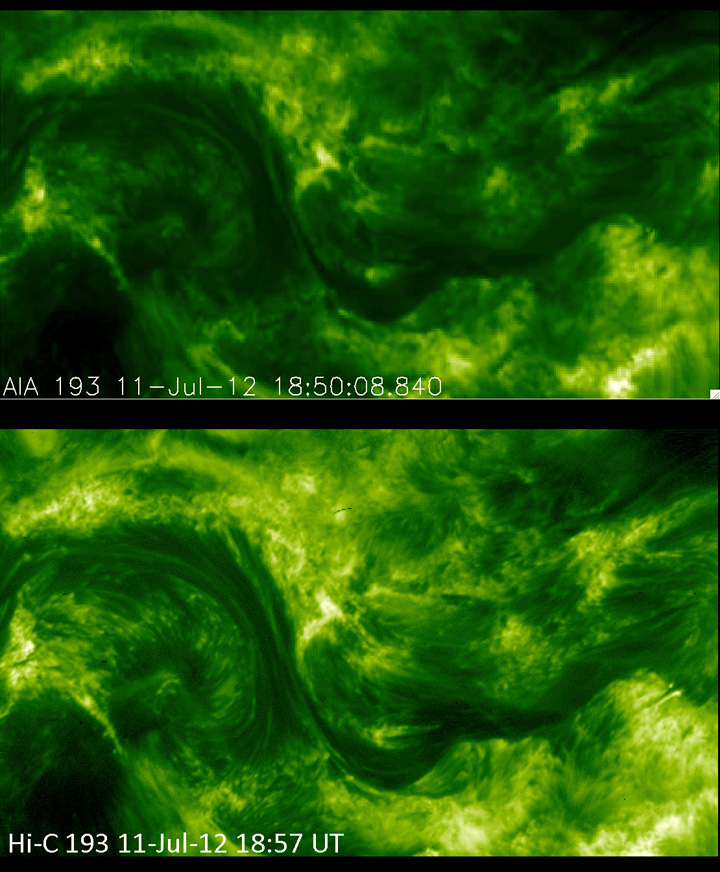Image List
-

These photos of the solar corona, or million-degree outer atmosphere, show the improvement in resolution offered by NASA's High Resolution Coronal Imager, or Hi-C (bottom), versus the Atmospheric Imaging Assembly on NASA's Solar Dynamics Observatory (top). Both images show a portion of the sun's surface roughly 85,000 by 50,000 miles in size. Hi-C launched on a sounding rocket on July 11, 2012 in a flight that lasted about 10 minutes. The representative-color images were made from observations of ultraviolet light at a wavelength of 19.3 nanometers (25 times shorter than the wavelength of visible light).
NASA -

This time-lapse movie shows activity in the sun's corona on July 11, 2012, with 10 minutes compressed into 10 seconds. It begins with images from the Atmospheric Imaging Assembly (AIA) on board NASA's Solar Dynamics Observatory. About three seconds in, the view switches to super-high-resolution photos of the same region from NASA's High Resolution Coronal Imager (Hi-C). Hi-C flew on a sounding rocket and only took data for about five minutes, so the view switches back to AIA data at the end. The representative-color images were made from observations of ultraviolet light at a wavelength of 19.3 nanometers (25 times shorter than the wavelength of visible light).
NASA -
